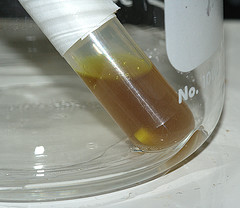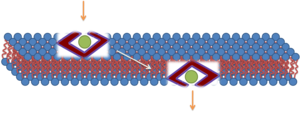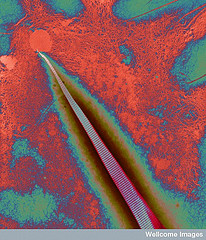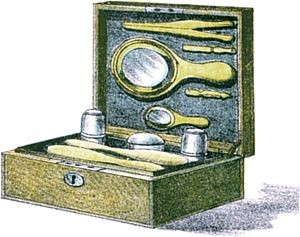Rational Peptide Design
A hexapeptide mimic of the N-terminal end of SNAP-25 which competes with this protein for a position in the SNARE complex is being used as a cosmetic peptide to eliminate facial lines resulting from muscular activity. However industry standard for the same indication is Botulinum Neurotoxin A that can enter the neuron by SV2 mediated endocytosis. It is not known whether the hexapeptide mimic actually enters the neuron in sufficient concentration to give the proposed effect. Read the clinical implications of the story here.
One of the earliest studies on this Acetyl Hexapeptide – 3 gives a ‘rational’ explanation for this limitation. Let me quote from the article:[1]
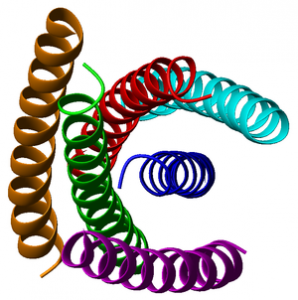 |
| Gp41 coiled coil hexamer 1aik topview (Photo credit: Wikipedia) |
Sequence and structure analysis of the N-terminal of SNAP-25 revealed the sequence EMQRR that display a high propensity to acquire an alpha-helical Structure along with a pronounced coiled-coil probability. AGADIR, a programme that estimates helical propensity of peptides, predicted a remarkable 12 % probability for this small peptide. These properties suggest that a peptide patterned after this sequence may modulate Calcium dependent exocytosis, Similar to those peptides derived from the C-terminal of SNAP-25.
I have the following questions about the rational explanation:
1. How can a hexapeptide have coiled-coil probability? (A minimum of 20 amino acids are needed for a coiled coil)[2]
2. Is 12% probability remarkable?
3. How is a N-terminal mimic be similar to a C-terminal mimic?
Is this an attempt to suggest that the structural peculiarities mediate an HIV virus like receptor mediated endocytosis. If only we knew the truth. If only….
References:
1. Blanes‐Mira, C et al. “A synthetic hexapeptide (Argireline) with antiwrinkle activity.” International journal of cosmetic science 24.5 (2002): 303-310.
2. Rose, A. “Genome-Wide Identification of Arabidopsis Coiled-Coil Proteins and …” 2004. <http://www.ncbi.nlm.nih.gov/pmc/articles/PMC389916/>





